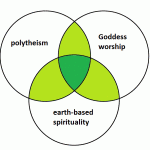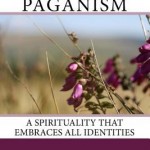An increasing number of people are beginning to identify themselves as belonging to more than one spiritual tradition – not merely in the sense of selecting attractive ideas from each tradition, but trying to be faithful to the ethos of both traditions.
Questions that might arise about dual or multi-faith practice are whether and how it is possible to combine them, especially if there is potential conflict between their worldviews, or their worldviews are mutually exclusive; how a particular person came to follow more than one tradition; what constitutes membership of a tradition; whether identification with a tradition is sufficient; and whether practising more than one faith is merely part of the ‘subjective turn’ of contemporary culture. There has been criticism of dual-faith practitioners (e.g. Thurston, 1994), and this may also shed some light on these questions.
In many religions, the idea of practising more than one tradition is uncontroversial – for example, many people practice Wicca and Druidry alongside each other (Carr-Gomm, 2002), or Paganism and Unitarian Universalism (Sealy, 2006), or Buddhism and Shinto (Kuroda, 1981: 3) – but for those faiths which claim the exclusive loyalty of their followers, practising more than one tradition may be seen as deeply problematic.
Combining worldviews
Hayes (2003: 8) identifies four models for an encounter between a missionising religion and an indigenous one:
- Rejection. The traditional knowledge is rejected as purely evil.
- Dvoeverie. Two incompatible beliefs or worldviews are held side by side, with little or no interaction between them.
- Syncretism. The two different beliefs are mingled, to make a third, and new belief, which is different from either component.
- Inculturation. Where the original local culture is transformed, and the incoming belief becomes part of it.
He is writing from the perspective of Orthodox Christian missionary endeavours, which seek to respect as far as possible the pre-Christian traditions of the culture being evangelised, and acknowledge that there is good in indigenous traditions. Nevertheless there is a fifth possibility, that instead of trying to convert people of other religions, the traditions agree to co-exist, whilst engaging in dialogue.
A similar example of an encounter between a missionising religion and an indigenous one can be found in the interaction of Buddhism and Shinto. According to Kuroda (1981: 3), Shinto was not a distinct religion prior to the arrival of Buddhism (Shinto was originally a Chinese word signifying any and all folk religion in China, Korea and Japan). In Japan, it is possible to be both Buddhist and Shinto at the same time, because neither world-view necessarily denies the other. This is perhaps similar to Hayes’ (2003) model of inculturation, whereby the incoming tradition transforms the indigenous one (though I suspect the process is actually one of mutual transformation).
Examples of religious encounter range from explaining one religion using the symbolism and terminology of another, to a full-blown mingling of the two traditions.
There have been various historical instances of rejection, syncretism, dvoeverie and inculturation. An example of rejection is the Protestant evangelisation of indigenous cultures, where there is a tendency to view the indigenous culture negatively (Hayes, 2003: 8). An example of dvoeverie is the simultaneous belief in Christian and Pagan entities allegedly held by many Russian peasants (Crummey, 1993: 701). Examples of syncretism are the mixing of Buddhist and Shinto themes in Japanese culture (Grayson, 1992: 202), or the practices of Santeria and Voudun. Examples of inculturation include the continuation of pre-Christian ideas within Christianity (McGinn, 1999: 282), or the incorporation of Bön practices within Tibetan Buddhism (Kvaerne, 1972). Of course, the boundaries between these four models will be rather blurred.
It seems that, whenever a religion encounters another religion, a need is felt to make some form of accommodation with the truth claims of the other religion, sometimes by denying them, sometimes by recasting them in the language of one’s own tradition, and sometimes by assigning the other religion’s holy figure a position in one’s own tradition; for example, Hindus regarding Jesus as a ‘supremely religious soul’ (Woodburne, 1927). The outcome of this process depends on the willingness of the faith communities to co-exist. At the level of the individual, religious belief is always more ‘messy’ than a cursory examination of the creeds and teachings of the religion would lead one to think:
People’s maps of belief are complex and they are shifting all the time. Interfaith encounter is one factor in those shifts, in the mutation of religions. People listen and try to explain. (Morgan, 1995: 163)
More than one form of syncretism can be identified, depending on the relative political and cultural status of the two systems being syncretised. Grayson (1992: 200) defines syncretism as the accommodation made by a world missionary religion (in the context he is discussing, Buddhism) to an ‘autocthonous religion’ (in this case, the indigenous folk religion of Korea). He further defines two forms of syncretism, ‘high’ and ‘low’. High syncretism is when the core values of the indigenous religion are retained, with only a veneer of the foreign religion; low syncretism is when only the surface trappings of the indigenous religion are retained, and its core values are replaced by those of the foreign religion.
Reverse syncretism (Grayson, 1992: 205) is when an indigenous religion begins to voluntarily incorporate elements of foreign religion into its practice (rather than the missionising religion making a compromise with the indigenous religion). An example here might be the way in which the Pagan revival has incorporated elements of Hindu belief and practice (e.g. chakras) to fill gaps in its repertoire of magical practices.
Another form of syncretism is ‘coinherence’ (Corless, 1994: 182), where two religions that both make sense to the practitioner are followed side-by-side. In the case of Corless (1994: 181) and other Christo-Buddhists, this seems to be because of the similarity of the two faiths. Corless (1994: 183) held the two traditions in a creative tension, an internal dialogue. This may sound superficially similar to dvoeverie, but in dvoeverie there is said to be little or no interaction between the two faiths in the mind of the practitioner, whereas in coinherence practice, the two are held in dialogue.
There have also been examples of deliberate syncretism, such as Ryōbu Shinto, a formal mixture of Buddhism and Shinto (Grayson, 1992: 202); the reorganisation of Roman paganism in response to Greek and Etruscan paganism (Grayson, 1992: 201); the Romanisation of indigenous deities, for example the cult of Mercury and Rosmerta (Webster, 1997: 326); and the creation of the syncretistic Din-I-Ilahi religion by the Mughal emperor Akbar (Lawrence, 1973: 61).
In a global and post-colonial culture, encounters between faiths no longer occur at the boundaries of their traditional heartlands, but everywhere. The interfaith movement is growing, both in order to make peace between conflicting traditions and to explore the idea that all religions are honouring the same Divine, or numinous (Morgan, 1995: 163).
At the same time, there seems to be a widening polarisation between liberal, tolerant and inclusivist views of religion, and ecstatic or evangelical practices which are frequently associated with fundamentalist and exclusivist views. The people who are attracted to this type of religion tend to long for a stable and ordered society but also want to feel their faith inwardly; however there is evidence for a decline of this sort of religion in England since the 1990s (Heelas and Woodhead, 2005: 146). Church-going in general has sharply declined in both Britain and the USA (Heelas and Woodhead, 2005: 56), whereas spirituality in the holistic milieu has been on the increase (Heelas and Woodhead, 2005: 42).
So it seems there are a range of possible responses to diversity: to embrace it and celebrate it; to tolerate it; or to reject it and seek to impose norms. However, no matter how a particular tradition responds to it, it is impossible to ignore it.
This article was originally published in the Unitarian journal, Faith and Freedom.
















